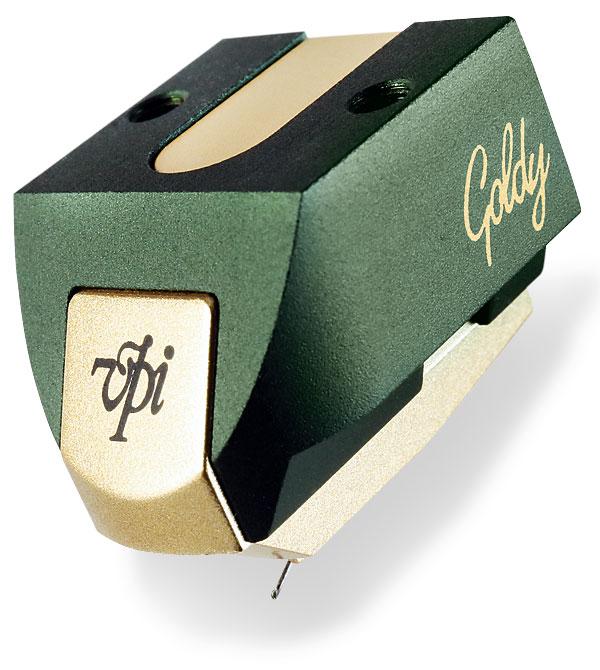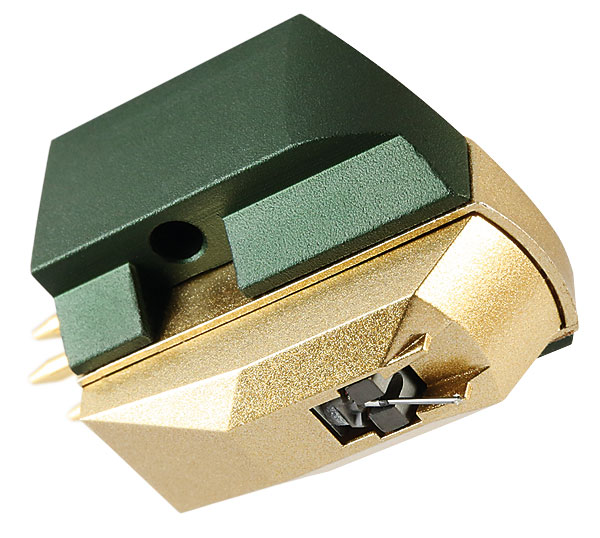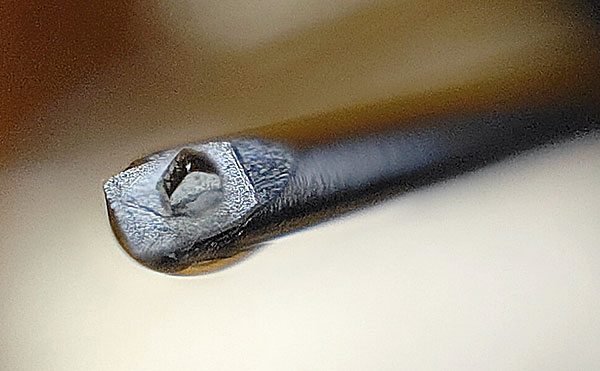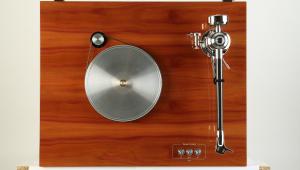VPI Goldy Cartridge

 Informed by the design of Audio-Technica's AT-OC9 pick-ups and tuned to 'hit the midrange', is VPI's latest cartridge collaboration a no-brainer for its turntable owners?
Informed by the design of Audio-Technica's AT-OC9 pick-ups and tuned to 'hit the midrange', is VPI's latest cartridge collaboration a no-brainer for its turntable owners?
When New Jersey-based turntable brand VPI wanted a cartridge (or three) to complement its range of decks and tonearms it was not inclined to waste precious time, money and effort on something that somebody else had been doing for years. So, rather than stray from its own speciality in 'large scale' engineering, it instead went knocking on Audio-Technica's door for the construction of its new £1250 Goldy MC.
This is not the first time that VPI has called upon the expertise in Machida, Tokyo. The £2400 VPI Shyla cartridge – supplied with the Prime 21+ turntable package [HFN Mar '21] – was the first moving-coil collaboration. In addition, the £100 VPI Shirley is an entry-level MM design found on decks like the Traveler, which also came about from this cross-Pacific partnership.
Family Affair
VPI's naming convention is not quite as arbitrary as it might seem – the Goldy is named after brand president Mat Weisfeld's second daughter; the Shyla being named after his first. And Shirley? That was the name of 'VPI's Grandma', Shirley Green, who was the mother of VPI founder Sheila Weisfeld. Glad we've cleared that up...

With the Shyla a development of Audio-Technica's ART9 series, the decision was taken to instead base the more affordable Goldy on an AT-OC9 model. The range-topping AT-OC9XSL [HFN Aug '19] was chosen as the starting point, informing the technology at the sharp end – a special Line Contact stylus mounted to a 0.28mm diameter nude boron cantilever [see micrograph, p67]. The motor unit comprises Audio-Technica's traditional V-coil configuration, and the heart of the generator is provided by a neodymium magnet and a permendur yoke.
The development process involved numerous prototypes winging their way between Japan and VPI's HQ before the desired sonic balance was achieved. The target was to optimise the new cartridge for VPI's 10in and 12in tonearms, rather than the more standard 9in type that would likely partner the AT-OC9XSL MC [or AT-OC9XSH, HFN Aug '19].
As Mat Weisfeld puts it: 'When voicing the Goldy, as with the Shyla, our main focus was to hit the midrange while still having a strong punch on the bass and detail on the highs'. To deliver this, Audio-Technica's engineers modified the internal damping of the cartridge, and made a few strategic material substitutions for one or two of the core components. VPI is remaining tight-lipped about the exact nature of the changes [see PM's Lab Report, p69], but as John Carroll of UK importer Renaissance Audio puts it, the revisions 'add a bit of meat onto the bones of the standard Audio-Technica MC...'. Rumour has it that more VPI/Audio-Technica collaborations are planned for the future.
Regal Style
Remarkably, the changes are so subtle that even the specification sheet gives nothing away. All major characteristics, including compliance, tracking force and the main electrical parameters remain unchanged from the AT-OC9XSL. The Goldy is more visually distinctive, however, as the original black alloy body colour of the A-T MC gives way to a dark green here. Against the standard gold of the cartridge's centre section, the new emerald colour looks almost regal.

The Goldy is supplied in a sturdy presentation box that both supports it well and makes it easy to remove [see p66]. One set of mounting screws for the M2.6 tapped holes on the top of the body are provided, as is a suitable Allen key. However, the screws have a thread length of 10mm and the body of the cartridge is not tapped all the way through. Consequently, on an SME 309 arm [HFN Sep '19 & Jan '23], the screws bottomed out well before meeting the top of the headshell. VPI's 3D-printed headshells are made of thicker material so I imagine it should not be a problem with its arms, but if you're thinking of using the Goldy on a third-party arm, bear this in mind.
This niggle aside, installation of the Goldy is easy thanks to the cartridge's chunky, parallel sides, and it was quickly fitted into the SME 309 on a Michell Gyro SE turntable. I began with the tracking force at the stated optimum value of 2g and found that altering this up or down made minimal difference to the sound. More critical, however, was VTA – the cartridge body does need to be truly parallel to the record surface to give of its best.
![]() Added Impact
Added Impact
With music playing, it becomes apparent that the ever-so-subtle modifications to the cartridge's internal damping and compliance have had a far less subtle effect on the presentation. While some vinyl enthusiasts have criticised A-T's OC9 series for its lift in output at the top end, that's not something that could be aimed at the Goldy. The balance of the cartridge is still recognisable, but this iteration brings an added richness and presence across the lower-mid that 'fills out' the performance beautifully.


























































